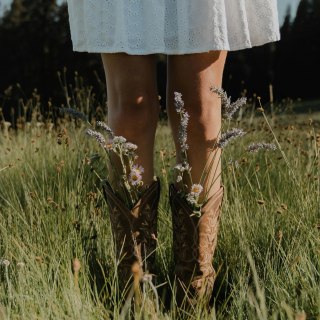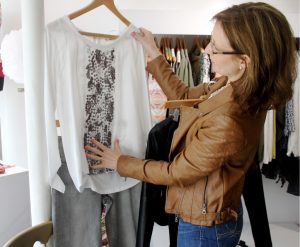That familiar change of season feeling is creeping in – the air carries a hint of crispness, the light shifts a little earlier each evening and suddenly your wardrobe starts to feel . . . . . wrong. Sound familiar? You’re experiencing the seasonal style shift and it’s completely normal to feel a bit lost between seasons.
I see this confusion every year. My clients panic that they need an entirely new wardrobe or worse, they cling to their summer pieces until they’re shivering in a sundress in October. But here’s the secret: transitional dressing isn’t about buying everything new – it’s about shopping your own wardrobe cleverly and adding a few strategic pieces that work overtime.
What Is Transitional Dressing?
Transitional dressing is the art of adapting your wardrobe to bridge the gap between seasons. It’s about creating outfits that work when the weather can’t make up its mind – those days when you leave the house in beautiful sunshine and return in a downpour or when the morning requires a coat but the afternoon feels tropical.
Think of it as your style insurance policy. Instead of being caught off-guard by unpredictable weather, you’re prepared for anything while looking effortlessly put-together.
Why Your Wardrobe Needs a Transitional Strategy
Extends Your Investment Those beautiful pieces you bought this summer? Transitional dressing helps you wear them well into autumn. That flowing midi dress doesn’t have to disappear in September – pair it with boots, tights, and a chunky cardigan, and suddenly it’s perfect for October.
Reduces Decision Fatigue When you have a clear transitional strategy, getting dressed becomes infinitely easier. No more standing in front of your wardrobe wondering if it’s cardigan weather or still too warm. You’ll have versatile pieces that work regardless.
Saves Money Rather than buying an entirely new seasonal wardrobe, transitional pieces work across multiple seasons. That blazer you buy now will see you through autumn, work for spring, and even handle those unexpected chilly summer evenings.
Keeps You Comfortable There’s nothing worse than being too hot or too cold because you guessed wrong about the weather. Transitional dressing keeps you comfortable and confident, whatever the day throws at you.
When to Start Thinking Transitionally
Late August to Early September: This is prime time. Start incorporating transitional pieces while you can still mix them with your summer favourites.
March to April: Spring transitional dressing works in reverse – gradually lightening up while keeping those cosy layers handy for unpredictable spring weather.
Year-Round Approach: Savvy dressers always keep a few transitional pieces in rotation. A denim jacket in summer, a lightweight knit in winter – these pieces ensure you’re never caught out.
The Psychology of Transitional Dressing
Here’s something I’ve learned from years of styling clients: how you dress affects how you feel about change. Transitional dressing isn’t just practical – it’s psychological preparation for the season ahead. When you start incorporating autumn elements into your outfits, you’re mentally preparing yourself for shorter days and cosier evenings.
It’s also about maintaining your style identity through change. You don’t become a different person when the seasons change, so why should your style completely transform overnight?
Key Principles for Successful Transitional Dressing
Layer Intelligently Think beyond the basic cardigan-over-dress formula. Consider texture and weight – a silk scarf can add warmth without bulk, while a lightweight wool blend provides more substantial coverage without overwhelming your frame.
Focus on Versatile Footwear Your shoes can completely transform the mood of an outfit. Ankle boots can make a summer dress feel autumnal, while trainers keep things casual and adaptable.
Embrace the Power of Accessories A structured bag, statement earrings, or bold scarf can shift your look from summer-light to autumn-ready without changing your core outfit.
Mind Your Colour Story This is where colour analysis becomes crucial. Just because it’s getting cooler doesn’t mean you need to abandon the colours that make you glow. If you’re a Light Spring, you don’t suddenly need to wear deep burgundy.
Building Your Transitional Mindset
The most successful transitional dressers think in terms of outfit formulas rather than individual pieces. Instead of “what shall I wear today?”, think “it’s cardigan-and-ankle-boots weather” or “perfect for the blazer-and-jeans combination”. Remember, transitional dressing is about evolution, not revolution. You’re not abandoning your summer style – you’re building on it, adding depth and warmth while maintaining what makes you feel authentically you.
Your Transitional Dressing Action Plan
Start now – today – by looking at next week’s weather and planning three outfits that could work for both warm and cool moments. Notice what you already own that could work harder with the right styling partner.
Next month I’ll be sharing my top 5 transitional pieces that work for every wardrobe and budget – the foundations that make this whole approach effortless. Until then, start experimenting with what you already own. You might be surprised by how much transitional potential is already hanging in your wardrobe.



Leave a Reply
You must be logged in to post a comment.